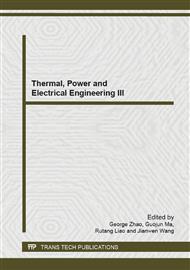p.270
p.274
p.281
p.287
p.295
p.299
p.304
p.308
p.316
Computer Simulation of Helium Adsorption in Argon Frost at Low Temperature
Abstract:
Fusion reactors require high-speed pumping of helium, deuterium and tritium while maintaining the inventory of tritium in the pumps at a low level. Cryopumping is potentially the most attractive method for this task. Cryosorption pump using rare-gas as sorbent is a good choice to satisfy the reactors for its special characters. Although a large number of works have been published in recent years on the properties of cryosorption pump using rare-gas as sorbent, it is hard to understand the behavior of fluid in a frost layer due to expensive and strict experiment conditions. Molecular modeling provides a convenient way to understand the principle of adsorption procedure in microscopic view. This paper applies the Grand Canonical Monte Carlo (GCMC) simulation method to study the adsorption behavior of Helium in argon frost. The HFD-B (HE) Aziz potential is used for the description of the interaction between two helium molecules. The adsorption behavior of helium in slit pore at T=4.3 K, 5 K, 6 K and 7 K is simulated. The simulation results show that the adsorption capacity increased rapidly as the bulk pressure smaller than 0.01 Pa, and the slop becomes slowly as pressure raised. The adsorption capacity is over 50% higher at lower temperature. The adsorption behavior agrees very well with experimental data in the public literature. The results show in this paper could be a guide for cryogenic workers to design cryosorption pump system. It is also provided a convenient method to predict the real adsorption procedure.
Info:
Periodical:
Pages:
295-298
Citation:
Online since:
June 2014
Authors:
Keywords:
Price:
Сopyright:
© 2014 Trans Tech Publications Ltd. All Rights Reserved
Share:
Citation:


